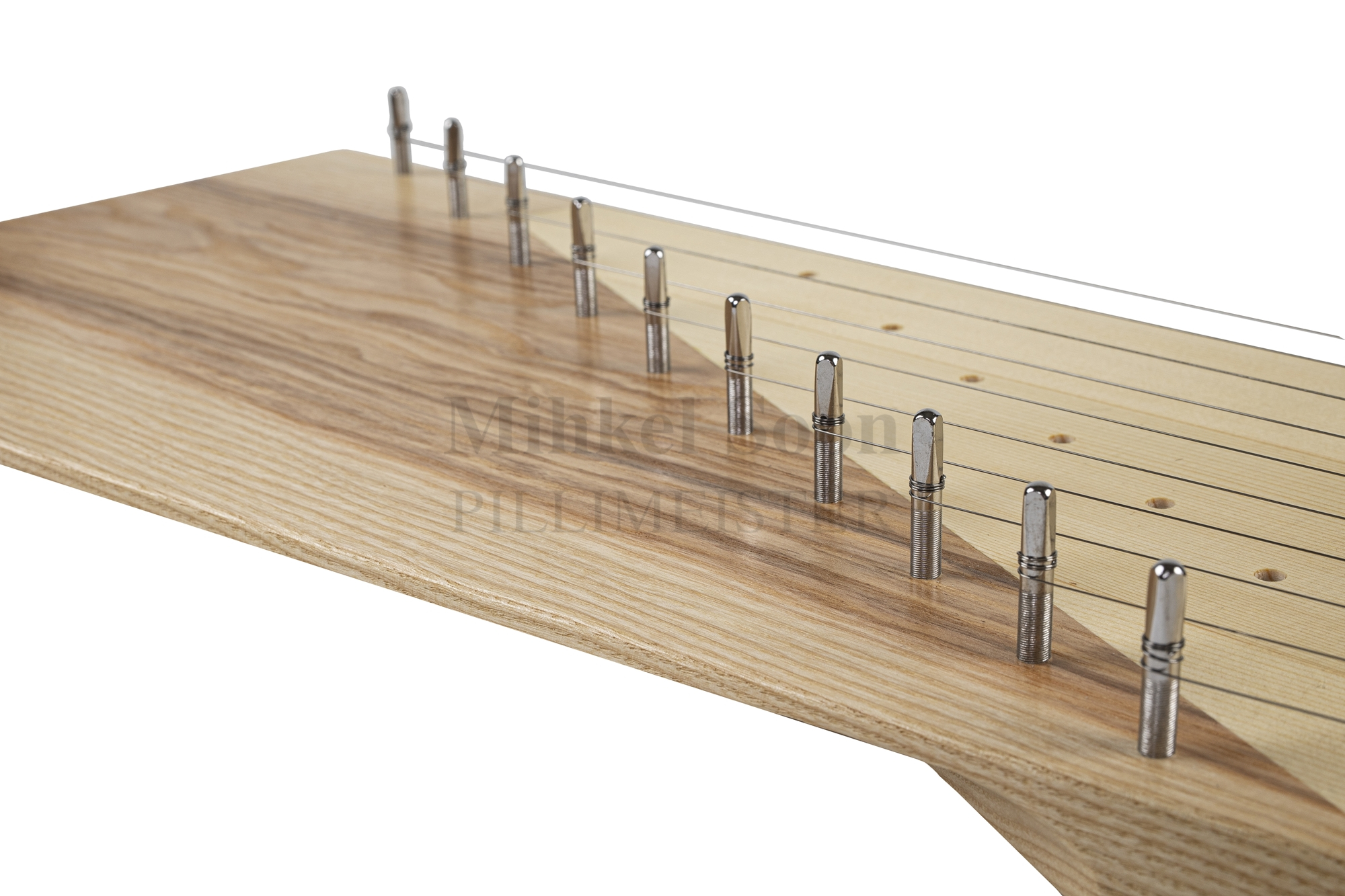10-stringed kannel with wing
€380.00 – €460.00
D major: A3 – B3 – #C4 – D4 – E4 – #F4 – G4 – A4 – B4 – #C5
5 mm nickel coated steel tuning pins
Steel strings
Instruments body hollowed out of a single piece of wood: spruce, ash or black alder
Belly made of radially cut spruce
Surface finished with sharp handcraft cutting tools
Finished with natural oils based varnishes
Tuning wrench and spare strings included
Dimensions: 78 x 15 x 8 cm length may vary according to the size of the wing
10-Stringed Kannel with wing: A Traditional Estonian Folk Instrument
The 10-stringed kannel with wing is one of the oldest and most significant instruments in Estonian folk music. It remains a beloved choice for both experienced musicians and those new to traditional music. This instrument, handcrafted from carefully selected Estonian black alder, ash, or spruce, produces a rich sound that is deeply connected to Estonia’s cultural heritage. The kannel has even been mentioned in the first line of the Estonian national epic and commemorated on a postage stamp.
Each kannel is made using traditional methods, with the body carved from a single block of wood. The “kolju” (a raised part under the player’s right hand where the tuning peg for the strings is attached) is also carved from the same piece of wood. The soundboard, made from high-quality spruce sourced from the Alps or Carpathian Mountains, enhances the instrument’s tone and resonance. It is finished with sharp, hand-held tools to achieve a smooth surface, reflecting respect for the old craftsmanship traditions when sanding techniques were less common, and instruments were entirely handmade using household tools. The soundholes are patterned after historical instruments kept in museums and arranged to optimize resonance.
The 10-string kannel with wing produces a deep, rich tone with complex overtones, thanks to its unique construction. A single plucked string vibrates through the bridge, setting off sympathetic vibrations in the other strings, creating a broad spectrum of sound. This characteristic is particularly associated with the traditional Estonian kannel.
Historically, the kannel has been a part of Estonian folk music for over a thousand years. Similar instruments can be found in neighboring countries, such as the kokles in Latvia, the kanklės in Lithuania, and the gusli in Russia. While often referred to as a Baltic psaltery or zither in English, these terms can be misleading, as they refer to different types of instruments with similar but distinct characteristics.











